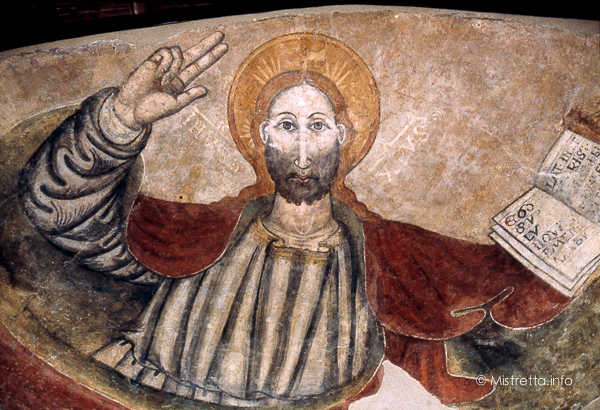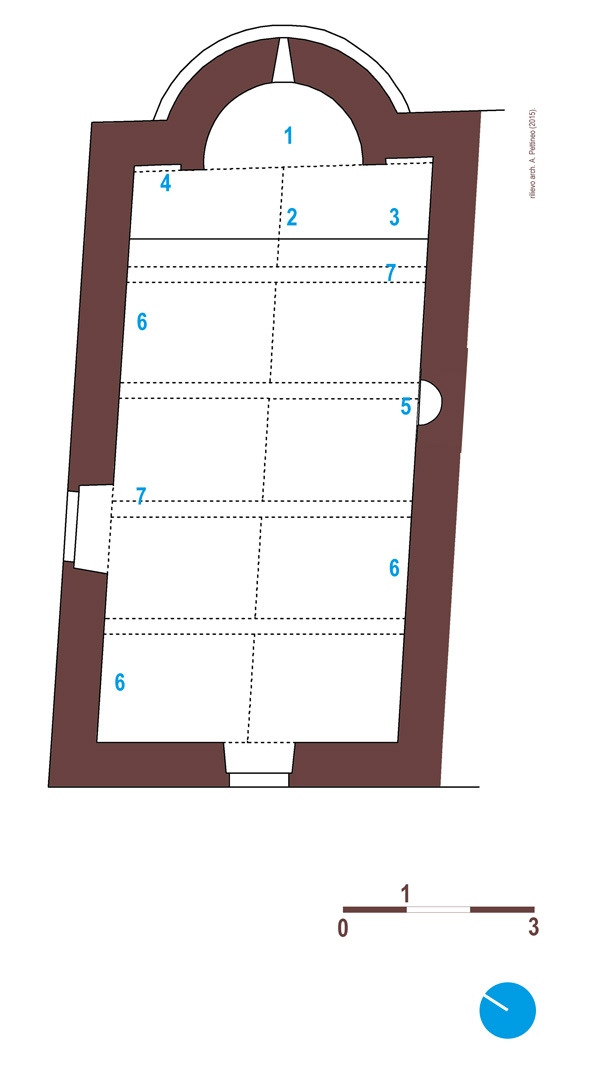Chiesa del SS. Salvatore
La chiesetta, che dà il nome al quartiere circostante, fu edificata tra XIV e XV secolo, a testimonianza della diffusione del culto tributato al Cristo dell’Ascensione, e successivamente della Trasfigurazione nel territorio della diocesi di Cefalù. Mistretta, infatti, appartenne a questa diocesi per sette secoli prima di transitare a quella di Patti nel 1844, e per tale ragione guardava con grande attenzione all’iconografia sacra presente nel Duomo della cittadina normanna.
I documenti del tardo ‘500 attestano la presenza nella chiesa di due altari laterali, di cui uno dedicato a S. Leonardo Abate, più quello situato nel presbiterio, di cui non vi è alcuna testimonianza.
L’abside è decorata ad affresco proprio con l’episodio dell’Ascensione, il Cristo Pantokratore sulla calotta e in basso gli Apostoli, molto lacunosi. L’immagine attualmente visibile è quella riproposta da un ignoto pittore durante l’ultimo quarto del XV secolo su un analogo soggetto più antico. Progressivamente abbandonata, la chiesetta venne parzialmente demolita e adibita a deposito per qualche decennio.
Alla fine del secolo scorso, un meritorio intervento ha restaurato l’affresco, ricostruito in pietra le pareti mancanti e ripristinato la copertura su mensole lignee del XVI secolo. Dal 2004 la chiesa è sede di adorazione eucaristica perpetua. (G. Travagliato)



